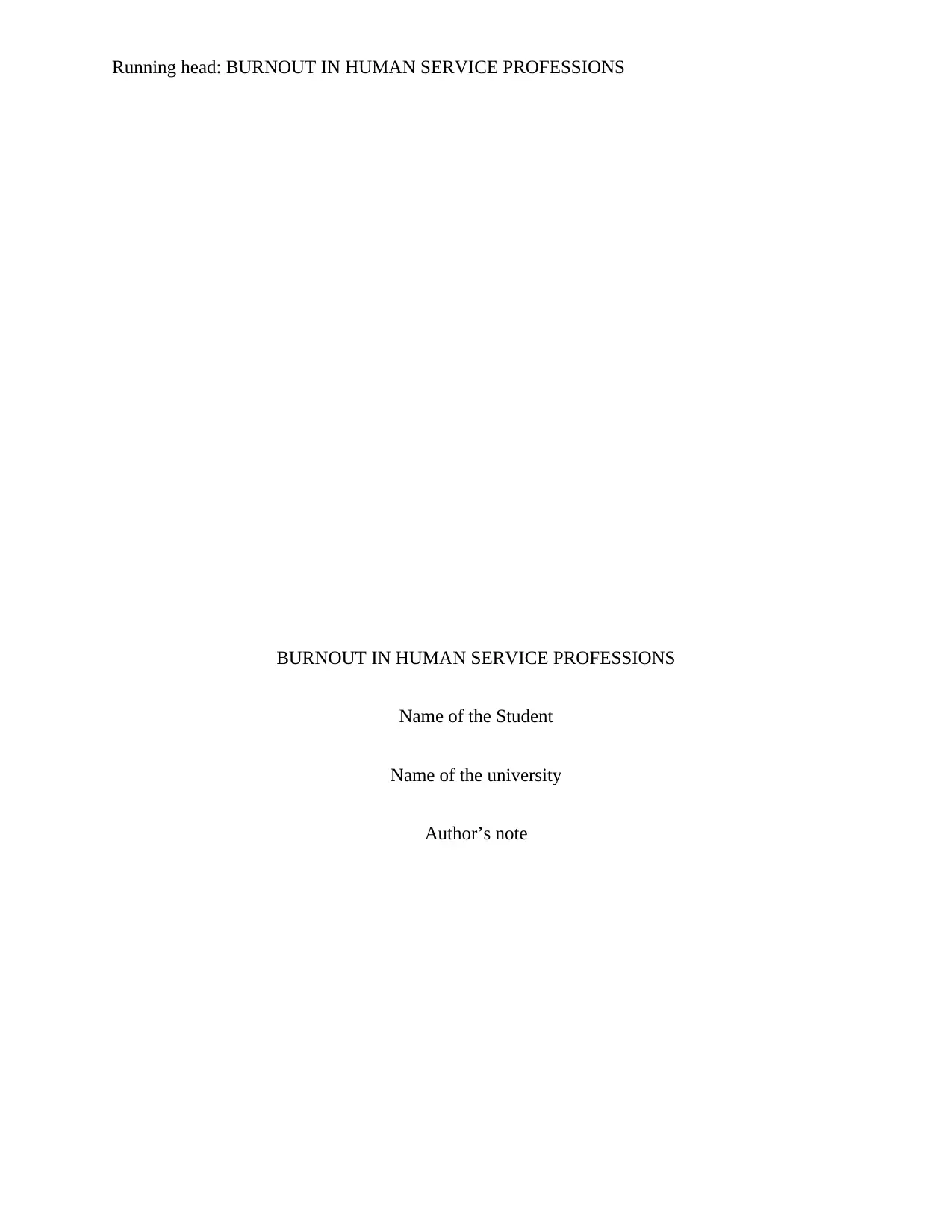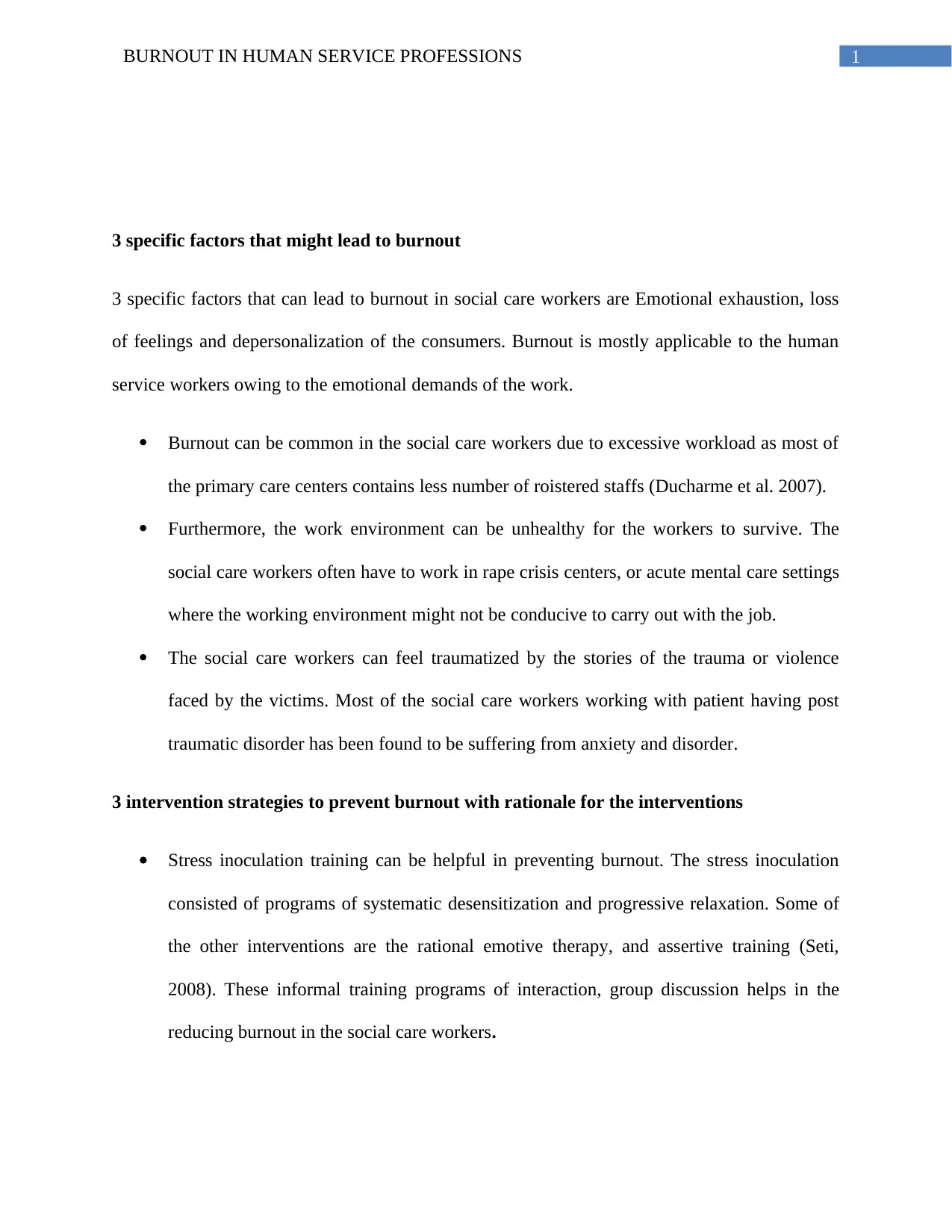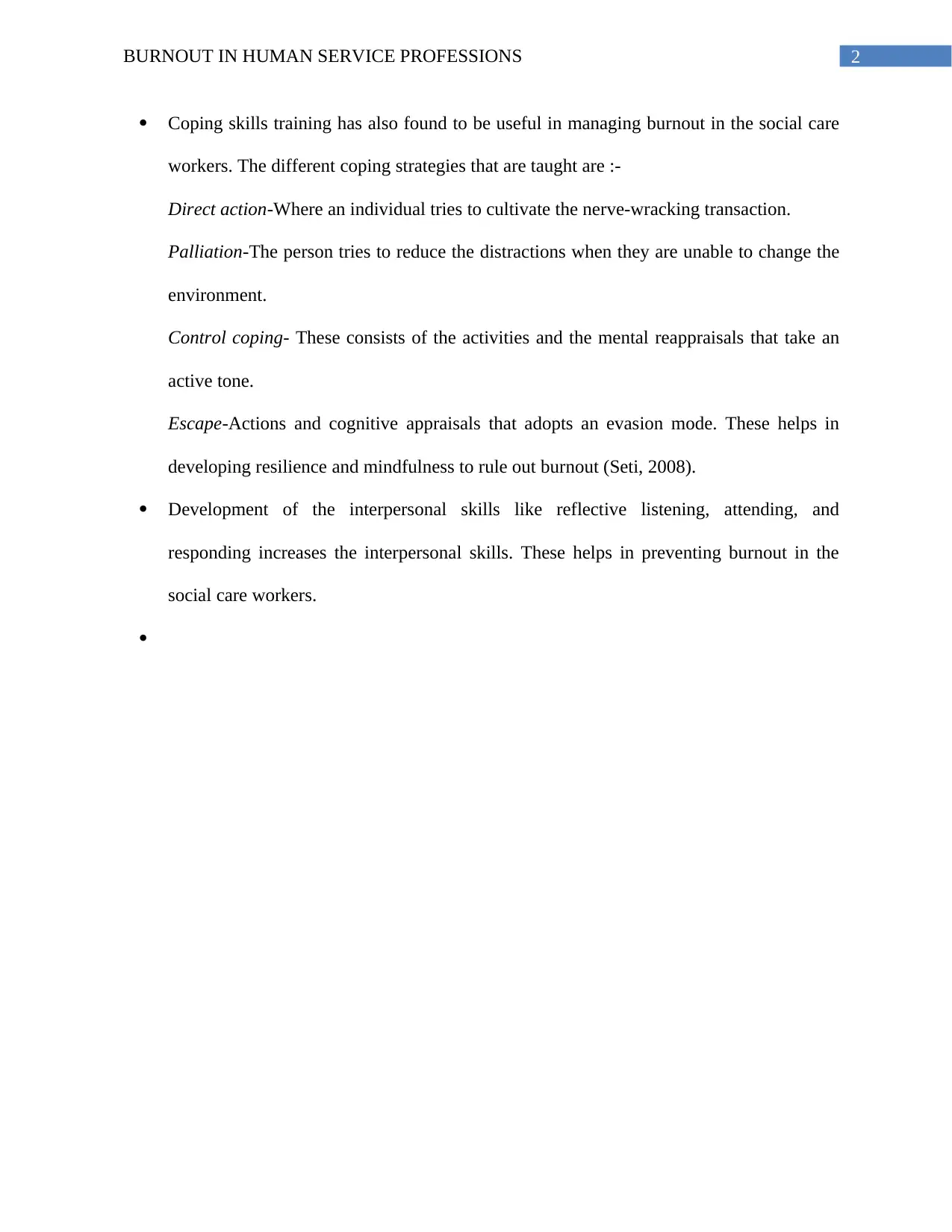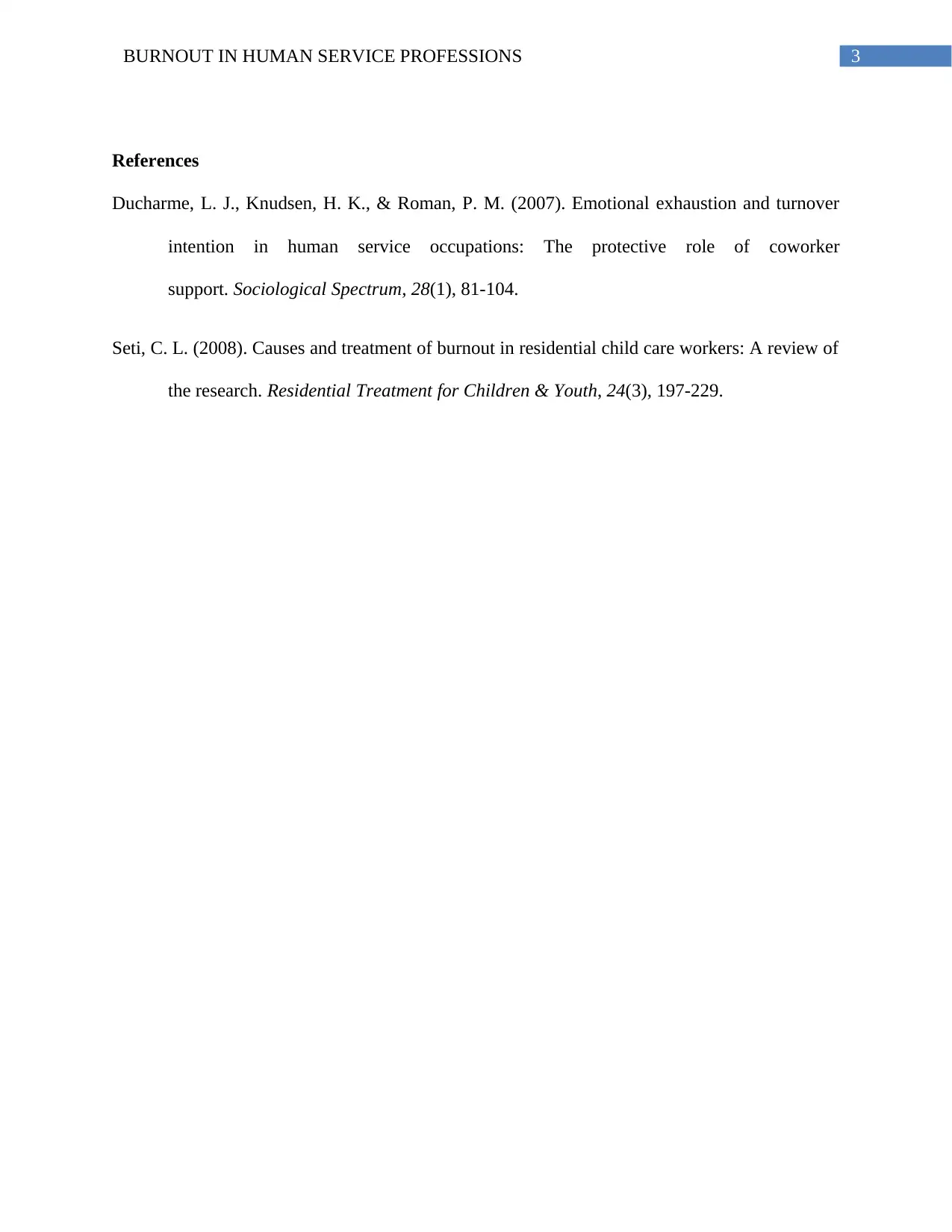Strategies to Prevent Burnout in Human Service Professions
VerifiedAdded on 2023/06/09
|4
|513
|84
Report
AI Summary
This report delves into the critical issue of burnout within human service professions. It identifies three key factors contributing to burnout, including emotional exhaustion, loss of feelings, and depersonalization of consumers, often exacerbated by excessive workloads and unhealthy work environments. The report also highlights the emotional toll on social care workers who are frequently exposed to traumatic stories. To mitigate burnout, the report proposes three intervention strategies: stress inoculation training, which includes systematic desensitization and relaxation techniques; coping skills training to develop resilience; and the development of interpersonal skills such as reflective listening. These strategies aim to equip human service workers with the tools necessary to manage stress, build resilience, and maintain their well-being in demanding work environments.
1 out of 4











![[object Object]](/_next/static/media/star-bottom.7253800d.svg)